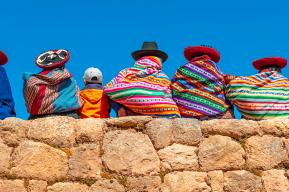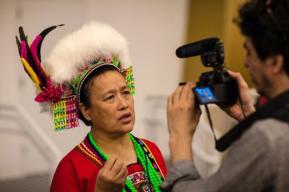News
Digital Empowerment Driving the International Decade of Indigenous Languages

Addressing Digital Challenges
One of the pressing concerns raised during the 10th Global Task Force meeting was the lack of compatibility between indigenous languages and existing keyboards and software. Digital communication is crucial for the preservation and promotion of indigenous languages, especially as younger generations embrace technology. Failure to adapt to digital formats may lead to the further marginalization and eventual disappearance of these languages. To bridge this gap, the UN Permanent Forum on indigenous Issues has urged large tech companies to support the development and accessibility of digital tools that enable the expansion and usage of indigenous peoples’ languages, with the active participation of indigenous communities.
Multilingual computer systems have existed for about 40 years, but minority and indigenous language speakers are still struggling to be able to use their language. It is clear that the computer industry has failed this group.
Initiatives Driving Digital Empowerment
Several initiatives are already underway, illustrating the positive impact of digital empowerment on indigenous languages. One such example is the partnership between Meta and Nunavut Tunngavik, an organization representing the Nunavummiut in Canada. Together, they work to develop the Inuktitut language on Facebook, making it accessible to over 35,000 speakers and a global audience.
This significant step reinforces the legitimacy of Inuktitut as an accessible language on Facebook, equal to English and French, said Aluki Kotierk, Nunavut Tunngavik inc, a member of United Nations Permanent Forum on Indigenous Issues.

Meta and Nunavut Tunngavik - Kevin Chan (Part 1)
Kevin Chan, Global Policy Director at META-Facebook, discusses the importance of partnerships in carrying out the International Decade of Indigenous Languages 2022-2032. This is following the successful launch of the Inuktitut language version of Facebook's platform in partnership with Nunavut Tunngavik Inc.

Meta and Nunavut Tunngavik - Kevin Chan (Part 2)
Aware of our global company's role and mission to bring more innovative technology to everyone, Motorola has invested in raising awareness and putting into practice our ongoing commitment to the project to revitalize indigenous languages, which was first presented in early 2021.
Another successful initiative involves Motorola’s collaboration with Lenovo to integrate indigenous languages into smartphone interfaces. Languages such as Kaingang from Brazil, Nheengatu, from the Amazon and Cherokee from the United States are now among the 80 languages available on Motorola smartphones. These integrations are instrumental in preserving the linguistic diversity of indigenous cultures and providing users with more options to engage in their native languages.
For these initiatives to thrive and expand, it is essential to provide bilingual software for developers. Various can assist in the planning of interventions, and the Welsh Government’s ‘Bilingual Technology Toolkit for Good User Experience’ is noteworthy. This toolkit aims to create better user experiences for bilingual users, facilitate indigenous language communication online, and share best practices among stakeholders. It serves as an inspiring example for peer learning by indigenous languages.
The UNESCO Recommendation Concerning the Promotion and Use of Multilingualism and Universal Access to Cyberspace supports these initiatives in breaking down language barriers and ensuring that all cultures, including indigenous peoples, have equal expression and access to cyberspace in their native languages. As more countries develop their national action plans for the Global Action Plan for the International Decade of Indigenous Languages, harnessing the power of language technologies becomes pivotal in creating a future where people of all ages can communicate in their mother tongues.
Digital empowerment lies at the heart of the International Decade of Indigenous Languages. With national action plans in place and collaborations between tech companies and Indigenous communities, significant strides are being made. By embracing linguistic diversity and using technology as a tool for language preservation, we can pave the way for a future where indigenous languages thrive, enriching our global cultural heritage.
The International Day of the World’s Indigenous Peoples is celebrated globally on 9 August, marking the date of the inaugural session of the Working Group on Indigenous Populations in 1982.

International Decade of Indigenous Languages (IDIL 2022-2032)
For more information about the Decade:






